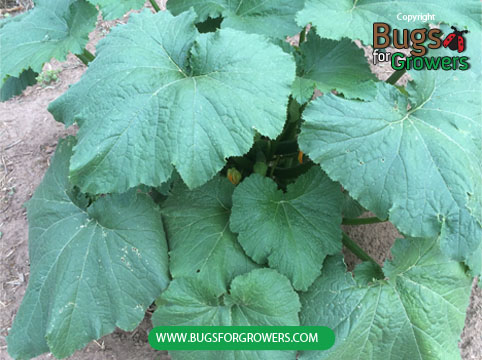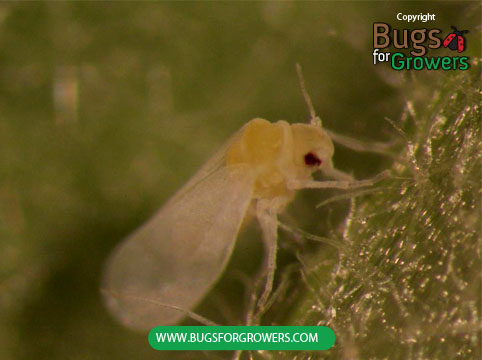What are Bio-pesticides?
Bio-pesticides are certain types of chemical products with pesticide properties derived from animals, microorganisms, plants and some kind of minerals. Bio-pesticides are known for their effectiveness against several insect pests and less toxicity to humans and the environment as compared to the traditional chemical pesticides.
Whitefly Damage
Organic zucchini (Photo 1) is grown as a high-value crop in large commercial farms as well as in small organic gardens but several insect pests like aphids, squash bug and whiteflies (Bemisia tabaci) cause a serious damage to zucchini (Cucurbita pepo) plants. The zucchini whiteflies, also known as silverleaf or sweetpotato whiteflies are the most devastating pests of many crops.
Whiteflies (Photo 2) cause damage to plants by sucking cell sap with their beak-like mouthparts from leaf and stem tissues. The main symptoms of whitefly damage include yellowing, and drying and falling off leaves from plants prematurely. While feeding whiteflies also excrete sticky honeydew on the leaves.
This sticky honeydew encourages growth of black sooty mold on the leaves and is generally known to affect the process of photosynthesis in which plants use sunlight as a source of energy to make their own food. Sweet honeydew also attracts ants that generally interferes the activity of beneficial insects that may be useful in the natural control of whiteflies and other soft-bodied insects.
Whiteflies are also known for transmitting many viruses including bean yellow disorder virus, cucumber bean yellowing virus, cucurbit yellow stunting disorder virus, sweetpotato chlorotic stunt virus, tomato chlorosis virus and tomato yellow leaf curl virus.


Biological Control of Whiteflies
Watch YouTube video about biological control of whiteflies with parasitoids
Control of whiteflies is difficult but there are several natural enemies including predatory insects (lacewings, bigeyed bugs, minute pirate bugs and whitefly predatory beetle, Delphastus pusills), predatory mites (Amblyseius swirskii) and parasitic wasps (Eretmocerus eremicus and Encarsia formosa) and beneficial nematodes (Steinernema carpocapsae and Steinernema feltiae) have been used as biological control agents to manage whiteflies.
In addition to live biological control agents, plant based compounds including Azadirachtin (found in leaves and kernels of neem tree) and Pyrethrin (found in chrysanthemum flowers) and microbial based products such as Spinosad (found in bacteria, Saccharopolyspora spinose; Mertz and Yao, 1990) have been used as bio-pesticides to control insect pests of different crops.
Recently, Razze et al. (2016) demonstrated that pyrethrin and insecticidal soap have a potential to be used as safe bio-pesticides to control whiteflies infesting different crops including zucchini in the organic gardens.
For more information on the biological control of whiteflies read my blog entitled “Control whiteflies with predatory mite Amblyseius swirskii”
Research Papers
- Mertz, F. P. and Yao, R. C. 1990. “Saccharopolyspora spinosa sp. nov. Isolated from Soil Collected in a Sugar Mill Rum Still”. International Journal of Systematic Bacteriology. 40: 34–39.
- Razze, J.M., Liburd, O.E., Nuessly, G.S. and Samuel-Foo, M. 2016. Evaluation of bioinsecticides for management of Bemisia tabaci (Hemiptera: Aleyrodidae) and the effect on the whitefly predator Delphastus catalinae (Coleoptera: Coccinellidae) in organic squash. Journal of Economic Entomology 109: 1766-1771.
